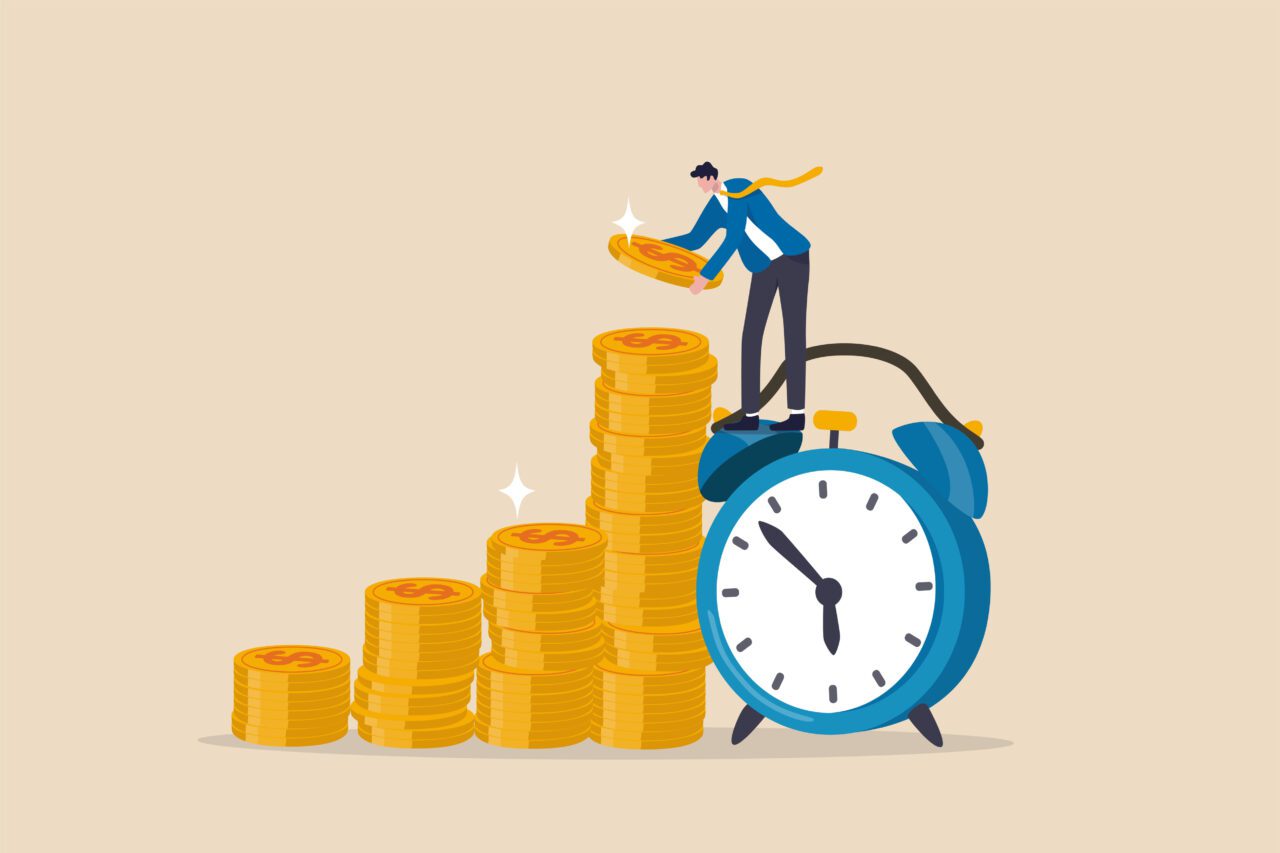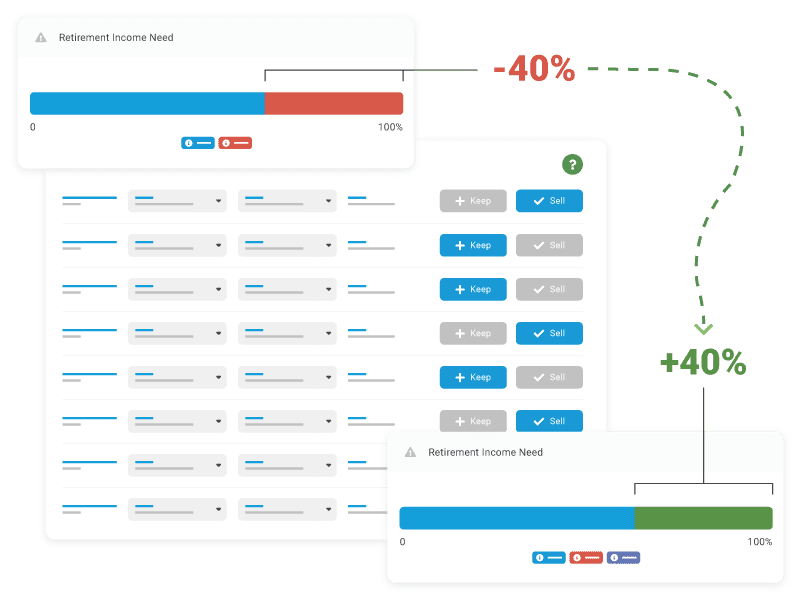What you Need to Know &
How A Rate of Return Works

What’s a Rate of Return on Investments?_Kaizen Wealth Management
Whether a casual investor or a more experienced stock market day trader, when anyone begins evaluating the performance potential for a given investment, the leading question that often comes to mind is what the rate of return will be. This is especially true for retirement planning, where an individual is trying to determine whether their savings account will provide sufficient income when they reach retirement age.
In most cases, the rate of return is assumed, whether by the individual or their financial advisor, with an eye toward past performance and historic averages. There is, however, a more sophisticated and accurate approach to personal finance and retirement planning that accounts for the specific characteristics of not only the investor but also their given asset class and what their goals are in retirement.
First, let’s explore some of the basics regarding rates of return and how they fit into financial planning.
What is a Rate of Return on Investment?
The rate of return (ROR) is the gain or loss on money invested over a period of time, typically expressed as a percentage. The ROR is used to measure the performance of an investment and is calculated by dividing the total return of the investment by the original cost of the investment.
The ROR is important because it provides investors with a way to compare the performance of different investments. For example, if two investments have the same ROR, but one has a higher initial cost, the investment with the lower initial cost will have generated a higher return on investment.
How is the Rate of Return Calculated?
To calculate the ROR, you will need to know the following:
The initial cost of the investment: This is the amount of money that was originally invested in the security or other asset.
The ending value of the investment: This is the current value of the security or other asset. If you sold the asset, this would be the sale price.
The holding period: This is the length of time that the security or other asset was held.
Once we have these values, we can then calculate the ROR using the following formula:
ROR = (Ending Value – Initial Cost) / Initial Cost

Having Realistic Expectations on Rate of Return_Kaizen Wealth
Having Realistic Expectations
Many investors expect a rate of that is higher than what they actually experience. This is often due to a lack of understanding of how investments work and the role that risk plays in investment returns. Studies show most wealthy investors currently expect a rate of return of about 17.5% even though the average long-term return of the stock market is significantly lower, especially when factoring for other environmental factors such as inflation.
That said, it’s important to understand there are a few different types of rates of return and several factors that can affect an investing rate of return.
What are the Different Types of Rates of Return?
There are many different types of rates of return, but here are a few of the basics:
Nominal Rate of Return: nominal rate of return is the simple percentage gain or loss of an investment over a period of time. For example, if you invest $100 in the stock market and it goes up by 10%, your nominal ROR would be 10%. However, this number does not take into account inflation or other factors that can erode the purchasing power of your investment.
Real Rate of Return: The real rate of return is the nominal rate of return minus inflation. For example, if you invest $100 in a stock and it goes up by 10%, but inflation is 3%, your real ROR would be 7%.
Total Return: The total return is the sum of the capital gain and the income from the investment. For example, if you invest $100 in a stock that pays a dividend of $5 per year, and the stock price increases by 10%, your total return would be 15%.

What are Some Factors That Can Affect the Rate of Return?_Kaizen Wealth Management
What are Some Factors That Can Affect the Rate of Return?
There are several factors that can affect the rate of return on an investment, including:
Inflation: As stated previously, inflation can reduce the purchasing power of your investment, which can in turn lower the rate of return.
Taxes: Taxes can also reduce the rate of return on investment. For example, if you invest in a stock that pays a dividend, you will have to pay taxes on the dividend income.
Risk: We all know that investing involves risk, and while riskier investments tend to have higher potential rates of return, they also come with a higher risk of loss.
What Factors Should be Considered When Estimating a Rate of Return?
The rate of return is an important metric for investors to consider when making investment decisions. However, it is not the only factor that should be considered. Investors should also take into account their investment goals, risk tolerance, and time horizon when making investment decisions.
One of the greatest factors that affect the rate of return for a specific investment is time. As the old saying goes: time in the market is better than timing the market. The longer an investment is held, the more time it has to compound and grow. However, investments that are held for a shorter period of time can still be profitable if they are managed correctly.
Another important component that determines the rate of return is the asset class. Different asset classes have different rates of return. For example, investing in the stock market typically has a higher rate of return than bonds.
A More Tailored Approach
While assuming rates of return is a natural step in evaluating performance, Kaizen Wealth Management prefers to employ a bespoke solution that is tailored to the individual investor, rather than relying solely on historical averages or a one-size-fits-all approach.
By using Simplicitree, our cutting-edge planning tool, we put you in control of your retirement goals and offer realistic insights into what sort of income you can expect in retirement, as well as reliable tracking or the ability to modify your plan if any changes are required along the way.
With a fully appointed portfolio of financial products, from 401(k) to traditional or Roth IRAs and annuities, Simplicitree calculates three basic benchmarks to both measure performance and set achievable retirement goals: retirement rate, preservation rate and legacy rate.
Retirement Rate
When solving for retirement rate, Simplicitree will demonstrate the rate of return required to live off retirement income while mitigating the risk of an investor outliving their retirement money investment accounts.
Preservation Rate
This metric provides a better understanding of the rate of return needed to preserve the overall value of your retirement accounts while living off of the annual interest income from your investments.
Legacy Rate
Would you like to leave a legacy for your loved ones? Simplicitree will calculate the rate of return necessary to offer a lasting legacy for your family upon your passing.

Let’s talk about managing your wealth_Kaizen Wealth
Kaizen Wealth Management and Simplicitree: A Winning Combination
You have worked hard for your money. You deserve a more focused approach to planning that’s tailored to your personality, specific goals, and existing investment portfolio. Kaizen Wealth Management offers an outstanding customer experience and experienced advisory or brokerage services combined with valuable and actionable insights. Learn more about our wealth management services.
If you’re ready for a plan that not only provides a clearer picture of your retirement plan but also lets you feel confident, knowing you and your retirement savings are on the right path contact us today. We’re ready to learn more about how we can help!



